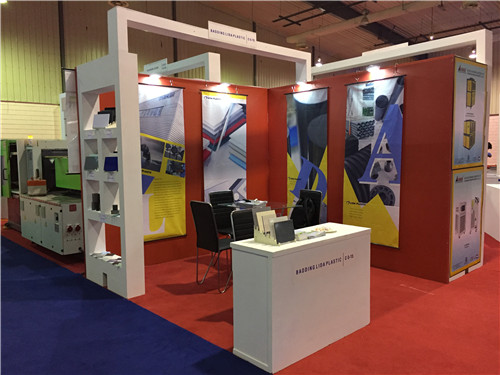Oct . 21, 2024 19:35 Back to list
Exploring the Features and Benefits of Modern PP Panels for Various Applications
Understanding PP Panel A Comprehensive Overview
In the world of construction and architecture, the choice of materials plays a crucial role in the overall performance, durability, and aesthetic appeal of a structure. One of the innovative materials gaining popularity in recent years is the PP (Polypropylene) panel. This article aims to provide a comprehensive overview of PP panels, exploring their composition, applications, advantages, and considerations for use.
What Are PP Panels?
PP panels are constructed from polypropylene, a thermoplastic polymer that is widely recognized for its versatility, strength, and resistance to various environmental factors. Unlike traditional materials such as wood or metal, PP panels are lightweight, making them easier to handle and install. The production process involves creating a laminated board that incorporates polypropylene, enhancing its strength and durability.
These panels are available in various forms, including sheets and composite structures, making them suitable for a wide range of applications. Their adaptability allows for creative designs and seamless integration into various architectural styles.
Applications of PP Panels
PP panels are utilized across a spectrum of industries due to their robust characteristics. Some of the most common applications include
1. Construction and Architecture PP panels are often used in residential and commercial buildings for interior and exterior cladding, partitions, and ceilings. Their attractive finish and customizable designs make them a popular choice among architects and builders.
2. Automotive Industry Their lightweight nature and resilience to high temperatures make PP panels ideal for automotive components. They are often used in manufacturing car interiors, dashboard components, and other structural parts.
3. Furniture Design The versatility of PP panels extends to furniture manufacturing. They can be used to create durable, lightweight furniture pieces ranging from office desks to outdoor seating.
4. Industrial Applications In factories and warehouses, PP panels are used for walls, ceilings, and storage solutions. Their resistance to chemicals and moisture makes them suitable for diverse industrial environments.
5. Signage and Displays Due to their ability to be printed on and customized, PP panels are also used for advertising, signage, and exhibition displays.
Advantages of PP Panels
pp panel

PP panels boast numerous advantages that set them apart from alternative construction materials
- Durability These panels are resistant to impact, UV radiation, and harsh weather conditions. This durability makes them ideal for outdoor applications, as they can withstand the elements without deteriorating.
- Lightweight Compared to traditional building materials, PP panels are remarkably lightweight, which simplifies transportation and installation processes. This characteristic can lead to reductions in overall project costs.
- Ease of Maintenance The non-porous surface of PP panels is easy to clean and maintain. They do not require special treatments or coatings, making upkeep straightforward.
- Cost-Effectiveness Due to their longevity and low maintenance requirements, PP panels can be more cost-effective in the long run, despite potentially higher initial costs compared to cheaper alternative materials.
- Environmentally Friendly Options Many manufacturers now offer PP panels that incorporate recycled materials, enhancing sustainability without compromising quality.
Considerations When Using PP Panels
While PP panels present many advantages, it is essential to consider a few factors before their application
- Thermal Expansion Like most plastics, PP panels can expand or contract with temperature changes. Proper installation techniques must be used to avoid warping or deformation.
- Limited Load-Bearing Capacity Although strong, PP panels may not be suitable for heavy load-bearing applications without the support of additional materials.
- Fire Resistance Standard polypropylene is not inherently fire-resistant, which can limit its use in certain applications unless treated with fire-retardant additives.
Conclusion
As the construction industry continues to evolve, the demand for versatile, durable, and cost-effective materials like PP panels is likely to grow. Their wide range of applications, coupled with the numerous advantages they offer, positions them as a worthy consideration for architects, builders, and manufacturers alike. By understanding both the benefits and limitations of PP panels, stakeholders can make informed decisions that enhance the functionality and aesthetic value of their projects. As more innovations emerge in material science, PP panels are sure to remain a significant player in the architecture and construction landscape.
-
High-Quality PPR Pipes and Fittings Durable ERA PPR & PVC PPR Solutions
NewsJul.08,2025
-
Black HDPE Cutting Board - Durable, Non-Porous & Food Safe HDPE Plastic Cutting Board
NewsJul.08,2025
-
High-Quality CPVC Panel Durable HDPE & PVC Panels Supplier
NewsJul.08,2025
-
Double PE Welding Rod Supplier - High Strength, Durable & Versatile Welding Solutions
NewsJul.07,2025
-
High-Quality PVC-O Pipe Supplier Durable 75mm PVC Pipe & Connections Leading PVC Pipe Company
NewsJul.07,2025
-
HDPE Drainage Pipe Supplier – Durable & Corrosion-Resistant Solutions
NewsJul.06,2025

